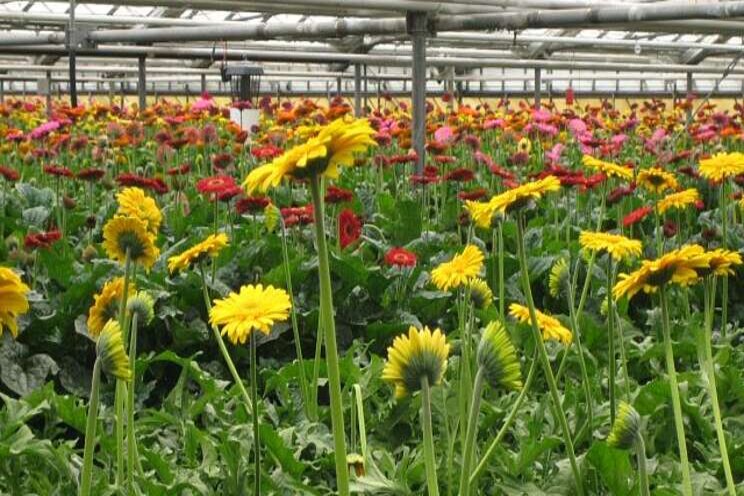Pests on a Gerbera Daisy
Added on 13 February 2020

Aphids
Aphids are small, pear-shaped insects that vary in color, have a pair of tube-like structures projecting from their rear end and use slender mouth parts to feed on Gerberas and other plants. Feeding by these pests can cause leaf curling, yellowing and distortion. Aphids also excrete a sticky sweet substance known as honeydew that hosts the development of unsightly sooty mold and attracts ants. Avoiding the use of excessive or fast-release nitrogen fertilizer, keeping nearby areas free of weeds, avoiding the use of broad-spectrum insecticides and controlling ants all help to limit aphid problems. Where aphids are present, spraying the Gerberas with a strong spray of water, pruning of heavily infested leaves and if necessary, applying an insecticidal soap or narrow-range horticultural oil offer control.
Leafminers
Leafminers, the larvae of small black and yellow flies, feed between the upper and lower leaf surface of the Gerbera and many other flowering hosts. The larval feeding appears as a winding tunnel or blotch, while adults puncture leaves and sometimes petals to feed, creating a light-colored stippling. Damage is usually not serious, but a heavy infestation can slow plant growth. Natural parasites, such as the small parasitic wasps in the genus Diglyphus, often control the leafminer population. Removing and disposing of infested leaves will provide further relief.
Mites
Multiple types of mites, including spider, broad and cyclamen mites, can feed on Gerberas. Spider mites look like tiny moving dots to the naked eye, while the others cannot be seen without a microscope. Spider mite damage appears as a stippling and bronzing or yellowing of leaves and premature leaf drop. Feeding by the other mites shows as distorted or dwarfed leaves and foliage. Providing the daisies with adequate irrigation, avoiding the use of broad-spectrum pesticides and if possible, isolating infested plants away from healthy ones are viable control techniques.
Whiteflies
Whiteflies are tiny, whitish insects that tend to appear in clusters on the undersides of leaves where they feed on sap. Whitefly feeding causes leaf yellowing and drop. Like aphids, whiteflies also excrete honeydew. A heavy whitefly infestation is difficult to treat. In many cases, natural whitefly enemies will offer control unless disrupted by dusty conditions, broad-spectrum pesticides or ants. Where needed, control efforts may include the removal of heavily-infested leaves, water sprays, the use of yellow sticky traps and the application of an insecticidal soap or narrow-range oil.
Thrips
Thrips are tiny delicate-looking insects with fringed wings that puncture Gerbera leaves and flowers to suck out cell contents. Thrips feeding causes stippling, color break and papery leaves, and thrips leave speck-like black feces where they feed. Addressing nearby weeds, laying reflective mulch around the plants and if necessary, applying a narrow-range oil, insecticidal soap or pyrethrin as soon as damage is noticed can offer some control.
Source: Homeguides
Photo Courtesy of Greenhousemag
Source: Homeguides
More news















